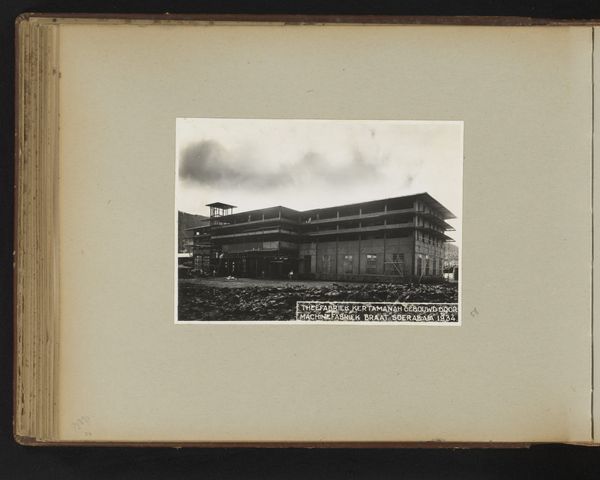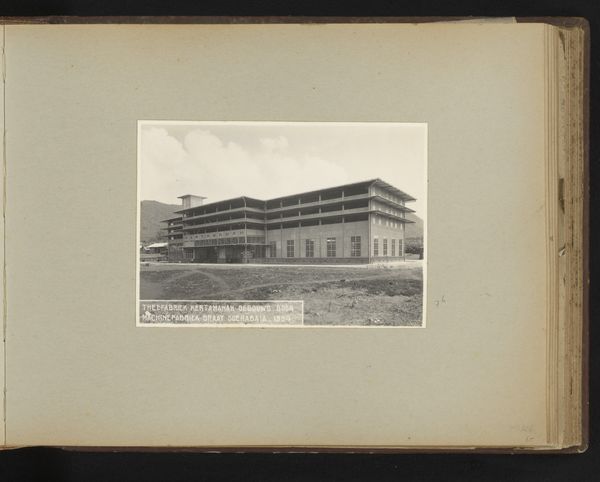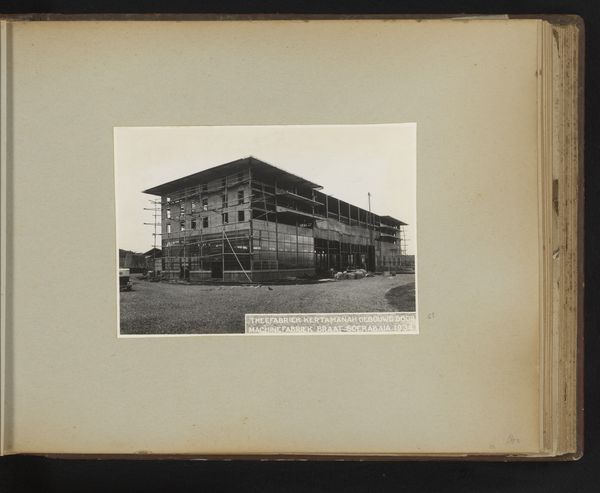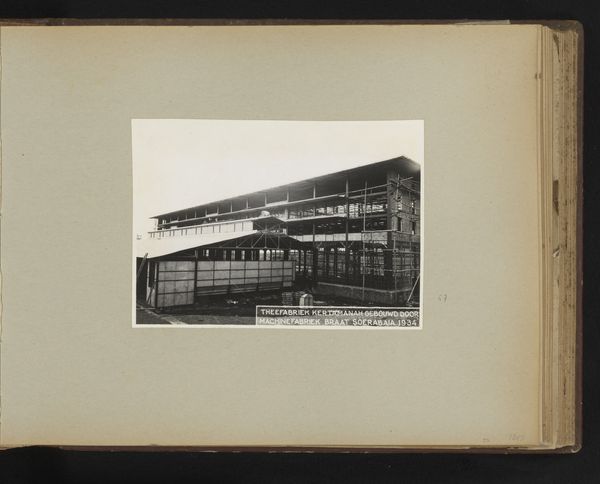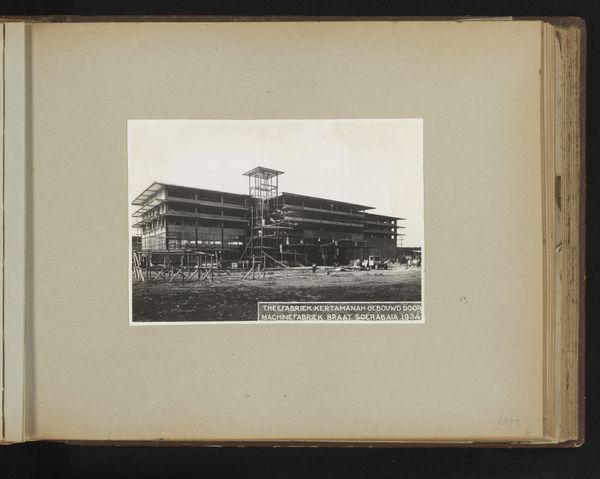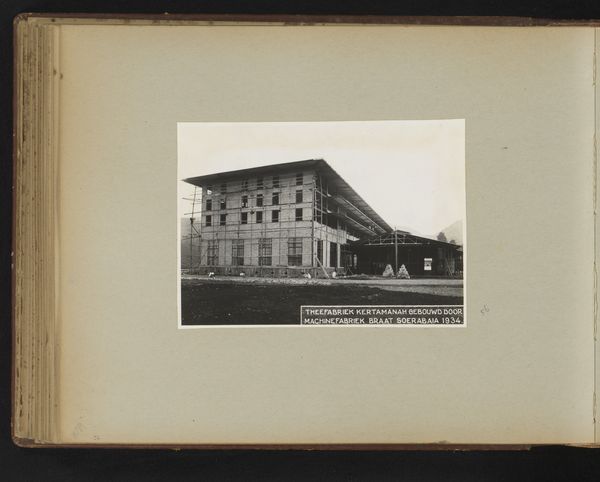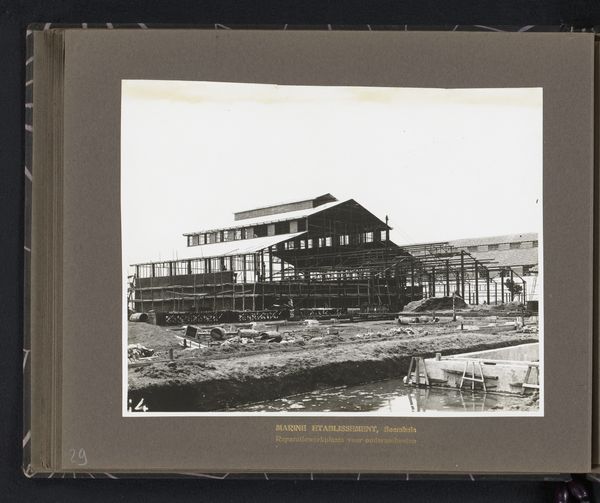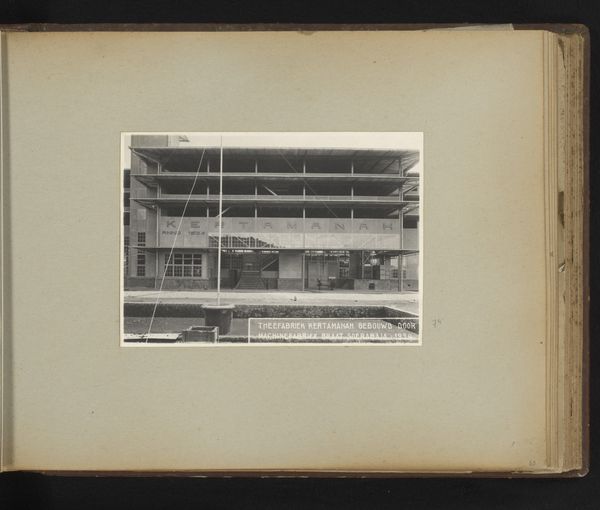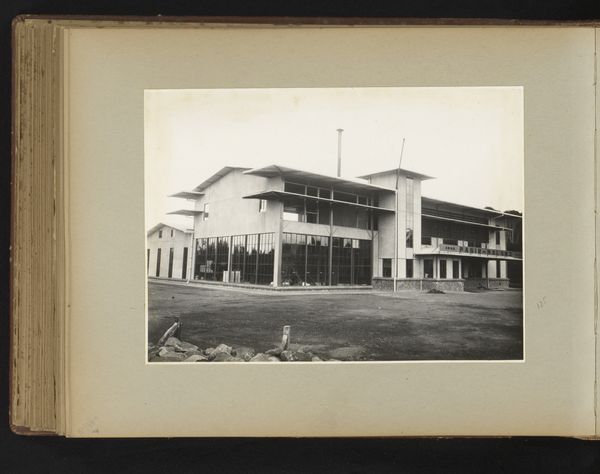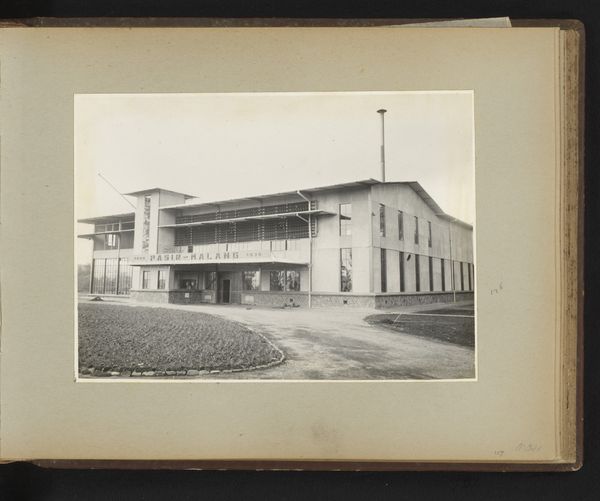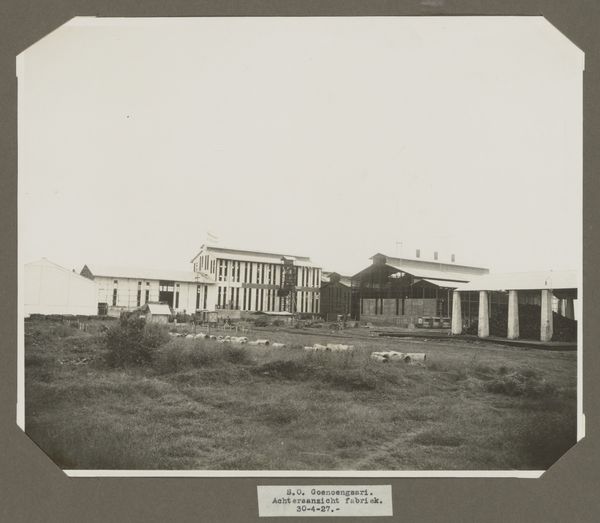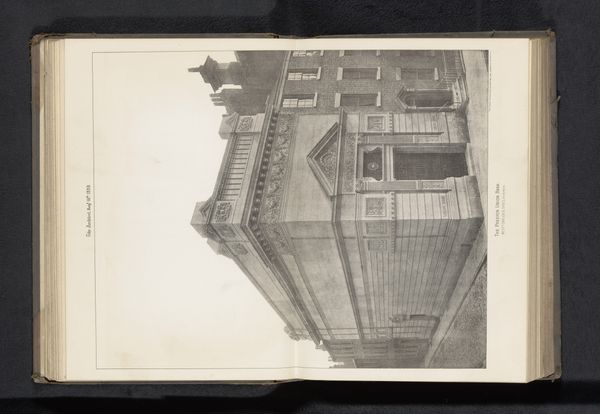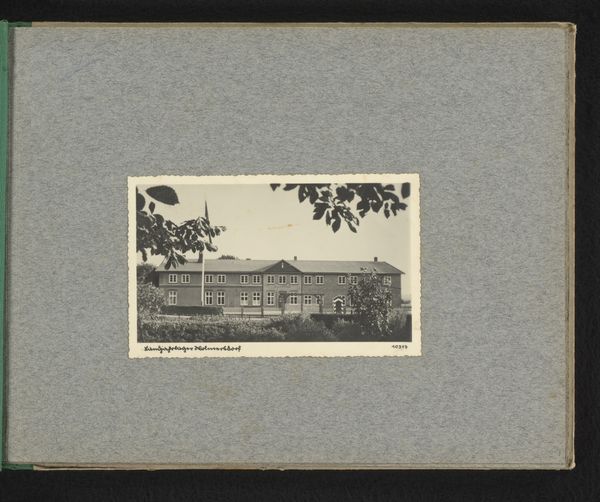
Theefabriek Kertamanah gebouwd door Machinefabriek Braat Soerabaia 1934 1934
0:00
0:00
print, photography, architecture
# print
#
landscape
#
photography
#
constructionism
#
architecture
Dimensions: height 124 mm, width 174 mm, height 250 mm, width 320 mm
Copyright: Rijks Museum: Open Domain
Editor: This intriguing photograph captures the Theefabriek Kertamanah, a tea factory constructed in 1934 by Machinefabriek Braat in Soerabaia. It's part of the Rijksmuseum collection. The industrial architecture almost feels monumental, and the setting quite stark. What do you make of this image? Curator: It's a powerful image, certainly. As a historian, what immediately strikes me is the representation of colonial industry. We see this factory, built by a Dutch company in what was then the Dutch East Indies. How does this image operate as propaganda, both for Dutch engineering and colonial enterprise? What ideological work is being done here? Editor: Propaganda? I hadn't considered that aspect. I suppose showcasing their capabilities abroad would reinforce power dynamics. Curator: Exactly. Think about the context: the global depression, growing nationalist movements in the colonies. This image is countering those narratives. It presents an image of Dutch mastery and progress. Who is it meant to convince and of what? Note the framing. A carefully constructed landscape featuring modern architectural elements which highlights the factory’s scale and technological advancement. Editor: So it's less about objective documentation and more about conveying a specific message about colonial authority. But is there any agency to this photographic style? Are architectural photography standards to blame? Curator: That’s a good point. The "Constructionism" art movement aimed to make public utilities beautiful and architectural photography served a crucial role in highlighting these works. But does that justify what this work ultimately represents? Or should this serve as a harsh reminder? Editor: That is true, I see what you mean. Now I view this not just as a building, but a historical document revealing the complex interplay of industrialization, colonialism, and visual representation. Thanks for helping me contextualize what's actually depicted here. Curator: It's a rewarding process. When engaging in dialogues, this is how different art historical methodologies intertwine and give us fresh interpretations.
Comments
No comments
Be the first to comment and join the conversation on the ultimate creative platform.
